Sapphire Radeon R9 290 Vapor-X OC 4GB Review
Manufacturer: SapphireUK: £349.98 (inc VAT)
US: $469.99 (ex Tax)
Preferred partner price: £379.99 (inc VAT)
We've already seen one Sapphire cooling solution for AMD's Hawaii chips when we looked at the R9 290X Tri-X, and it's certainly an effective one. However, now Sapphire is back to tame Hawaii again with a cooler that it claims is even better, the Vapor-X, which uses vapour chamber cooling technology coupled with another triple fan design. Specifically, we're looking at the Sapphire R9 290 Vapor-X OC variant, though there is also a non-overclocked one available as well as R9 290X editions, including a bonkers UK-exclusive 8GB version.
At £350 it commands a fairly hefty premium of £30-£40 over the cheapest R9 290 cards. What's more, the excellent Asus R9 290 DirectCU II OC can be had for just £320 now, so Sapphire has some stiff competition. That said, it does ship its Vapor-X OC card with higher clock speeds than Asus: 1,030MHz core compared to 1,000MHz and 1.4GHz (5.6GHz effective) memory compared to 1.26GHz (5.04GHz effective). These clock speeds also mean that Sapphire's card is 9 and 11 percent faster respectively than a stock speed R9 290, so we're looking at higher than average factory overclocks here.
Looking at the wider market, the £350 price tag also means the card is approaching the price of stock R9 290X cards and is on par with the GTX 780 as well. As one of AMD's highest end cards, the R9 290 qualifies for the Radeon Gold promotion, granting buyers a choice of three games from the latest selection in the Never Settle Forever package. A GTX 780, meanwhile, will currently net you a free copy of Watch Dogs.
In the box is an HDMI cable and two dual molex to 8-pin power adaptor cables. The card has a black and light blue/turquoise colour scheme, with the black parts of the shroud made from metal and the coloured bits plastic. Although it has a dual-slot rear I/O design it's effectively still a triple slot design like the Tri-X cards because of the cooler's size. As such, it will block two of your motherboards PCI slots rather than just one, which is worth bearing in mind if you're thinking of a two card set-up. In this regard it loses out to the Asus DirectCU II OC card, which has a true dual-slot design.
An initial examination of the card reveals a standard selection of video outputs. As VGA connections aren't supported by the Hawaii GPU, both DVI ports are the DVI-D variety. There is also no sign of a CrossFire connector since as of Hawaii AMD is able to do this entirely over the PCI-E lanes. Two 8-pin PCI-E plugs supply the card with power, a step up from the 8-pin/6-pin reference design.
Sapphire has maintained the R9 290's dual BIOS functionality, equipping it with a top-mounted button near the rear I/O that toggles the card between legacy and UEFI BIOS modes. Another switch is found on the backside of the card marked with on and off functions. This refers to the Intelligent Fan Control; when enabled, the two fans either side of the central one will stop spinning once temperatures are low enough.
Sapphire uses a custom PCB for this edition of the R9 290, and it extends a little bit past the standard PCI bracket width – worth remembering if space is tight. On the PCB we find sixteen 2Gb SK Hynix memory chips with the part number H5GC2H24BFR-T2C, which are rated to run at 6Gbps.
There's also a 5+1 power phase arrangement, and though this is no different to the stock card, Sapphire does use its own layout and components. Finally, there are two fan headers (one for the centre fan, one for the side ones) and an extra header next to the rear I/O which controls the temperature based lighting of the Sapphire logo on the side. This will glow yellow, orange and eventually red as load and temperature increase. It can also turn blue, which is when the side fans stop spinning if Intelligent Fan Control is activated.
The hefty Vapor-X cooler is very similar to the Tri-X one we saw before. There's a copper GPU baseplate, which here is part of the vapour chamber, as well as five copper heat pipes and dual aluminium fin stacks. An attractive brushed metal backplate is used to give the card some aesthetic flair and to support the heatsink weight, though it has no major cooling function itself. A PCB contact plate with sticky thermal pads is used to draw heat away from every memory chip as well as some of the power circuitry, while a small separate heatsink is used to cool the main power phases. Thanks to the vertical heatsink fins and the open sides of the cooler's shroud, the majority of hot air exhausted by the card will end up in your chassis.
Specifications
- Graphics processor AMD Radeon R9 290, 1,030MHz
- Pipeline 2,560 stream processors, 160 texture units, 64 ROPs
- Memory 4GB GDDR5, 5.6GHz effective
- Bandwidth 358.4GB/sec, 512-bit interface
- Compatibility Direct X 11.2, OpenGL 4.3, Mantle
- Outputs/Inputs 2 x Dual Link DVI-D, HDMI, DisplayPort
- Power connections 2 x 8-pin PCI-E, top-mounted
- Size 305mm long, triple-slot
- Warranty Two years

MSI MPG Velox 100R Chassis Review
October 14 2021 | 15:04


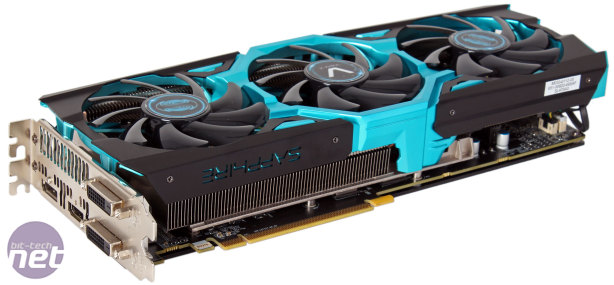
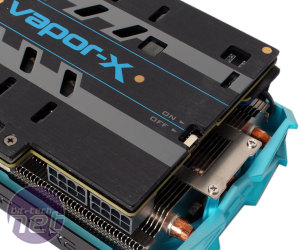
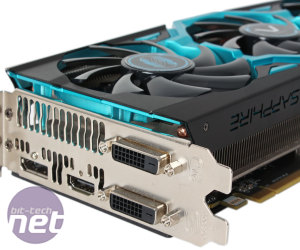
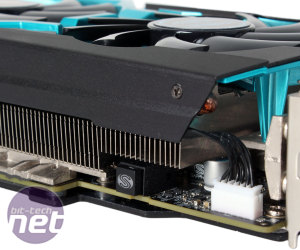
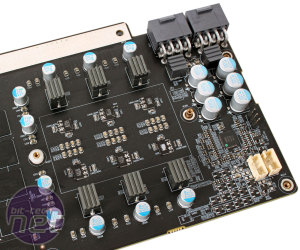

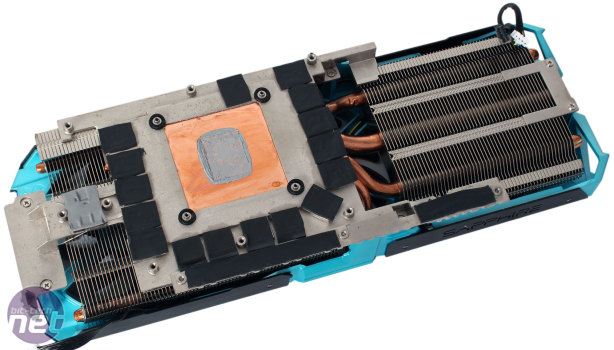







Want to comment? Please log in.